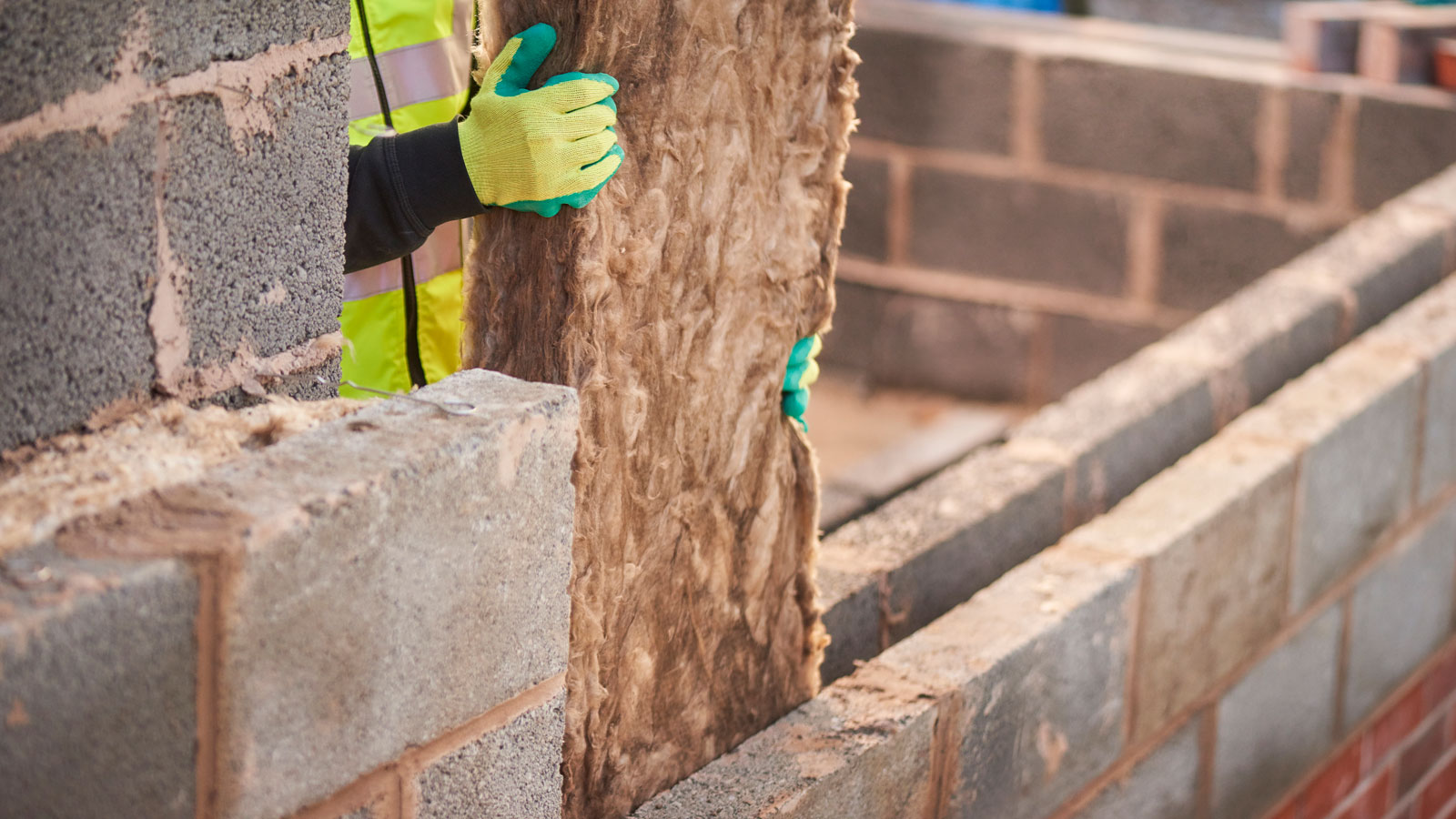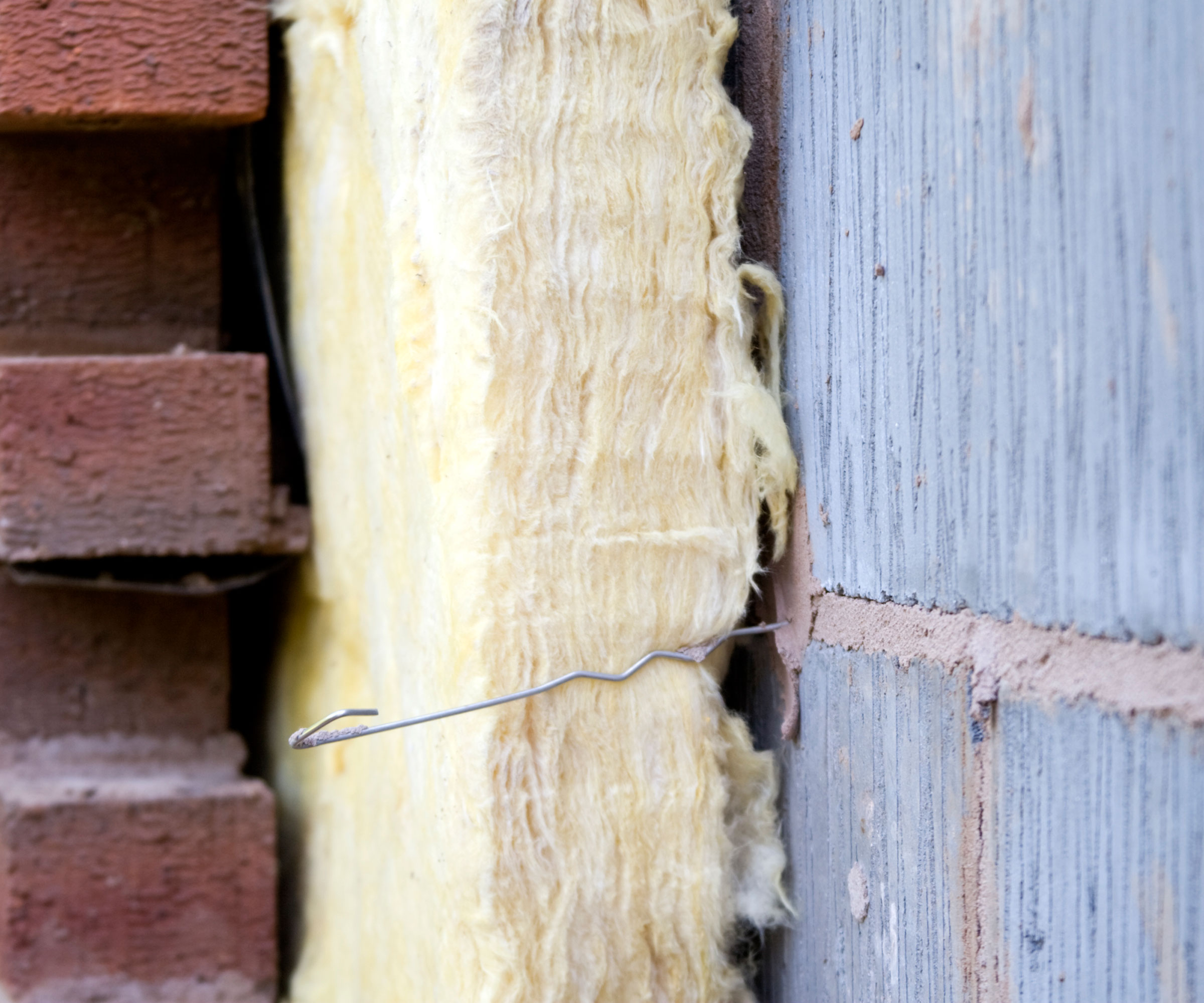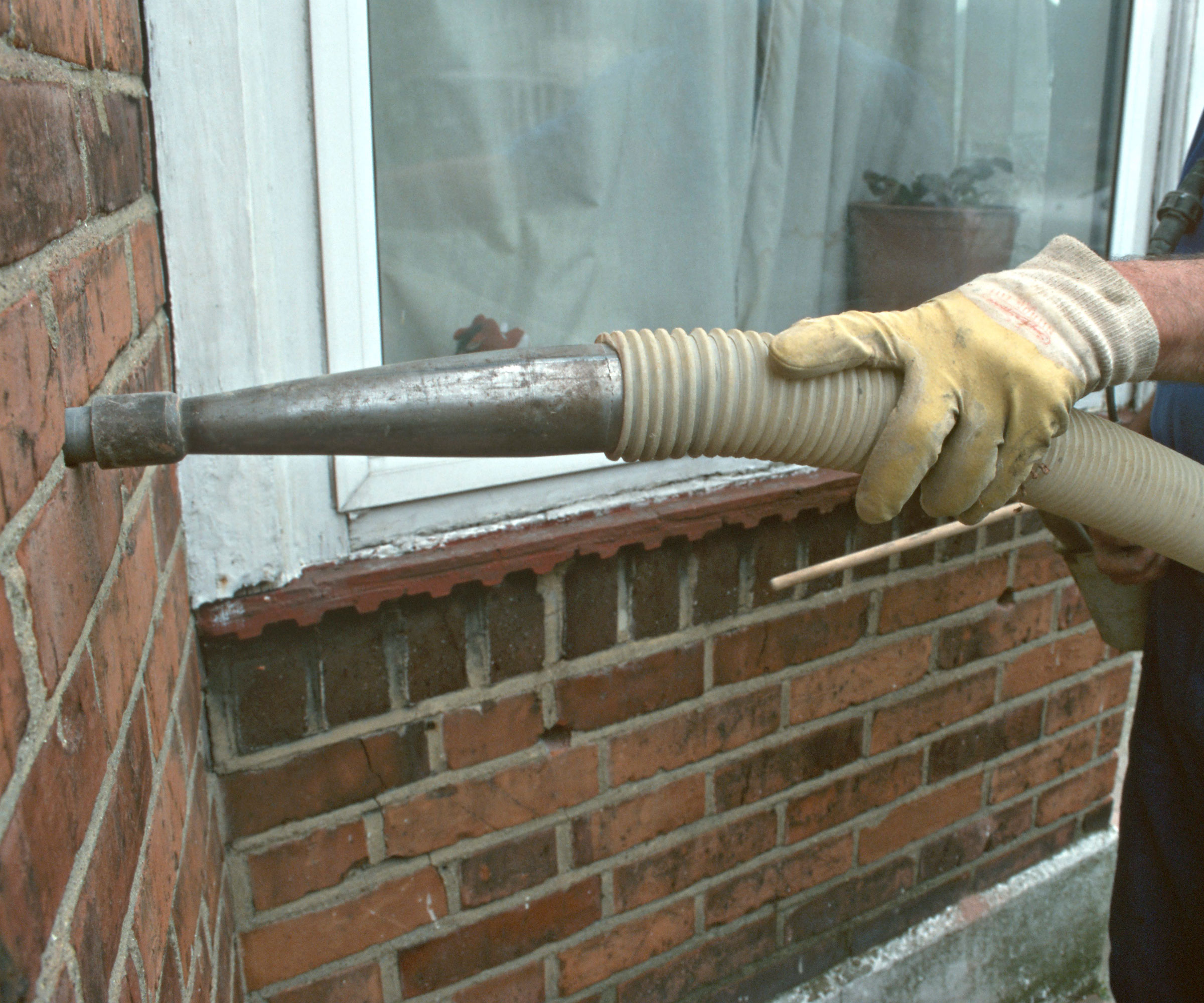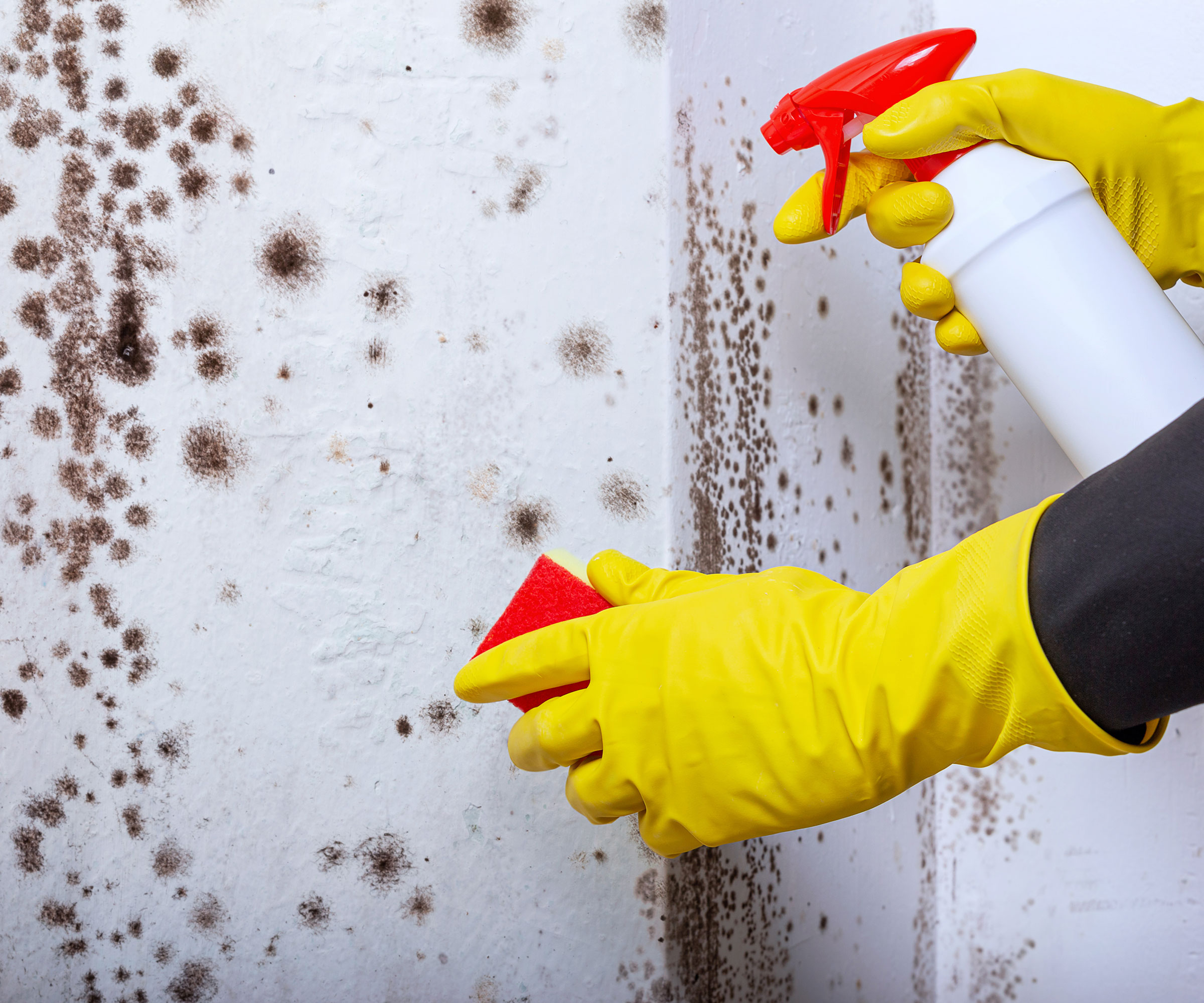Just how much does cavity wall insulation cost? Our expert-led guide explains how much to budget and how to avoid wasting money
Cavity wall insulation can be a great way to increase comfort levels and reduce household bills – but how much does it cost and is it the right option for you?

Just how much does cavity wall insulation cost? If you are considering adding it in or upgrading existing insulation, this is likely to be a consideration for you right now.
Cavity wall insulation can be one of the best ways to reduce heat loss in a home, yet bad installation, the wrong materials and and using it where it is simply unsuitable can render that initial outlay worthless.
"According to our research, about 33% of all the heat lost in an uninsulated home escapes through the walls," reveals Richard Northcott, knowledge manager at Energy Saving Trust. "By installing cavity wall insulation, you can save energy and reduce your heating bill."
Our guide explores how much it costs to buy and install cavity wall insulation, the factors that can affect these figures and the potentially expensive mistakes to be aware of.
How much does cavity wall insulation cost?
Costs for insulating a wall vary greatly, depending on a number of factors, including, fairly obviously, the size of your house.
'The cost is not uniform, varying significantly by property type,' picks up Samuel Hitch, MD at Buy Insulation Online Ltd. "While the material cost for retrofit insulation (such as blown beads or foam) generally ranges between £13 and £30 per square metre, the final total price is much higher.
"The total average cost for a mid-terrace home is approximately £1,500, rising to around £2,700 for a semi-detached house, and up to £4,600 for a detached home," continues Samuel. "Professional labour often accounts for up to 60% of this overall project price. A pre-installation borescope survey, essential for compliance, can cost up to £300."
Bring your dream home to life with expert advice, how to guides and design inspiration. Sign up for our newsletter and get two free tickets to a Homebuilding & Renovating Show near you.

With over 20 years of expertise, Samuel leads a group of UK companies specialising in industrial insulation, mechanical engineering, and electrical construction estimating. His companies deliver comprehensive solutions across the construction sector, from technical insulation sales to MEP pre construction management.

Richard has been with Energy Saving Trust since 2024. He has 14 years’ experience in the energy saving industry and before joining EST he set up a home energy advice service for a small charity that helped residents with energy advice topics. Richard is also a qualified energy assessor and trained in thermal imaging, and has provided energy assessments for home owners and businesses by using thermal cameras to see heat loss in buildings.
Are grants available for cavity wall insulation?
The good news is that, in some cases, financial help might be available to those looking at adding in cavity wall insulation.
"In England, Scotland or Wales, you might be eligible for funding via the Great British Insulation Scheme (GBIS).," advises Richard Northcott. "This is a government-backed scheme to upgrade the least energy efficient homes across Great Britain.
"Cavity wall insulation is the most common measure installed via GBIS, accounting for 45% of all measures installed."
What happens if cavity wall insulation is poorly installed?
If you are going to the not-inconsiderable expensive of installing cavity wall insulation, you want to be sure that the job is done well.
"The consequences of poorly installed cavity wall insulation are severe and costly," warns Samuel Hitch. "The primary physical failure is moisture saturation, where water penetrates the external wall and is carried across the insulation material to the inner wall, effectively 'bridging' the cavity.
"This results in patches of penetrating damp, excessive black mould growth, and long-term risks such as the corrosion of critical wall ties," continues Samuel. "Critically, concerns over damp and structural damage resulting from poor CWI have led to some mortgage providers refusing to lend money on affected properties, severely impacting property value and saleability."
While poorly installed CWI can be put right, this comes at a cost.
"Remediation is expensive and invasive, requiring three main steps," explains Samuel.
- Extraction: Professional removal of the failed, saturated insulation. Costs start from approximately £1,680 for a typical semi-detached home and can escalate to as much as £2,520 for a typical detached property.
- External repair: Factor in repointing costs for the comprehensive remediation of the external walls, including repointing damaged mortar and sealing all cracks, to ensure the building envelope is watertight.
- Internal repair: Addressing internal damage, such as removing affected plaster and replacing it with a damp-resistant system.
Is cavity wall insulation the best option for your home?
In some cases, cavity wall insulation won't be the best type of insulation and, in this case, you'll obviously want to spend your money elsewhere.
"If your house was built after the 1920s, its external walls are probably cavity walls," explains Richard Northcott. "A cavity wall is made up of two masonry walls with a gap in between them. The outer layer is usually made of brick, while the inner layer will be made of brick or concrete block. Pre-1920, older, houses are more likely to have solid walls. A solid wall has no cavity: each wall is a single solid wall, usually made of brick or stone.
"Cavity wall insulation is suitable for many homes and many people have no issues following its installation," continues Richard. "But cavity wall insulation might not be suitable if your home is exposed to extreme weather or flooring, in a poor condition, if there’s a risk of your rooms overheating or if it has been constructed with narrow cavities, less than 50mm (usually in homes built pre-1920’s)."
"Homes built before the 1920s or 1929 are overwhelmingly solid-wall construction and are physically unsuitable," further explains Samuel Hitch. "Mid-terrace homes built after 1945 generally have a cavity, but those built in the 1930s require specific inspection."

Can cavity wall insulation be used within damp walls?
The condition of your walls and the cavity within the inner and outer layers can also affect the cost of installation – particularly in the case of damp.
"Existing dampness and damage do not merely complicate the process – they render the property unsuitable for CWI until full remediation is complete," points out Samuel Hitch. "If external defects are present, moisture penetration is ongoing. Installing insulation traps this moisture, preventing the wall from drying out and potentially shifting the dew point further inwards, which can greatly exacerbate the risk of condensation and mould.
"Additionally, if cavities contain accumulated rubble, dirt, or mortar debris at the base, this will act as a permanent moisture bridge," continues Samuel. "Any home with structural damage, such as cracks or defective pointing, must be repaired beforehand."
What are the different types of cavity wall insulation?
There are several options when it comes to the type of cavity wall insulation that can be installed – but the best ways to insulate your home will very much depend on the property.
"The materials used depend on the project type," picks up Samuel Hitch. "For retrofit projects with an existing cavity, materials are injected or blown in. These commonly include expanded polystyrene (EPS) beads, mineral wool fibre, and polyurethane or urea formaldehyde (PU/UF) foam.
"For new constructions or extensions, materials are installed as rigid sheets or slabs during construction," continues Samuel. "Examples include rigid polyisocyanurate (PIR) boards (such as Celotex CW4000) and dense mineral wool insulation slabs (such as Knauf DriTherm)."
Blown insulation tends to be the cheapest option, with rigid boards and slabs sitting at the higher end of the price scale.
"There is no universal 'best type' of CWI material," explains Samuel. "The 'right' type is defined by its compliance with the specific environmental and structural conditions of the property, including cavity width and the wind-driven rain exposure zone. The definitive measure is the BBA Agrément Certificate, which must explicitly cover the product's suitability for the measured site conditions. The 'wrong' type is any material installed without this rigorous verification or in a property that is physically unsuitable."

Does cavity wall insulation cause damp?
Never try to save money simply by specifying the cheapest type of cavity wall insulation – you could run into all kinds of problems that will only end up costing you more in the long-run, damp included.
"While CWI helps mitigate cold surface condensation by warming the inner wall surface, improper installation creates problems," explains Samuel Hitch. "Voids or gaps in the insulation, resulting from poor application, create thermal bridges (cold spots) that attract atmospheric moisture, significantly increasing condensation and black mould growth inside the home.
"Furthermore, if the material is used in a high-exposure zone for which it is not certified, saturation will occur, disrupting the wall’s moisture balance and leading directly to penetrating damp."
"A good installer should not block or seal any intentional ventilation such as underfloor grilles or airbricks as these help keep wooden beams and floors dry,' adds Richard Northcott. 'Wall vents and trickle vents are also important as they let small amounts of fresh air flow into rooms."

FAQs
How much lower can you expect heating bills to be with CWI?
As well as increased comfort levels, installing cavity wall insulation can also cut household bills – but by how much?
According to Energy Saving Trust, for the average detached house, annual savings of £420 can be expected, while a semi-detached house could see bills slashed by £240 per year.
What are the building regulations for cavity wall insulation?
As with most home upgrades, building regulations apply to cavity wall insulation. To ignore them could mean paying out later down the line to put work right. There are several approved documents to be aware of, as Samuel Hitch explains.
"CWI is governed by Approved Document L (Conservation of Fuel and Power) This mandates insulation continuity to avoid thermal bridging. The cavity wall insulation must extend below the damp-proof course (DPC) and at least 215mm (one full block height) below the underside of the floor structure/slab," says Samuel.
"Approved Document C (Resistance to Moisture) requires that the design accounts for resistance to moisture, meaning installers must assess the exposure of the building to wind-driven rain and ensure the external finishes are appropriate for the local climate zone."
How much does a survey for cavity wall insulation cost?
In order to ensure you are specifying the correct type of insulation and are spending you money in the right places, a survey is key and, if you are renovating a house, this becomes even more important.
"A detailed pre-installation survey, performed by a qualified professional using a borescope inspection, is mandatory for compliance" explains Samuel Hitch. "This inspection visually confirms the adequate cavity width (some systems require a minimum of 50mm), the absence of existing damp, and, critically, the lack of debris or mortar snots that would compromise the installation."
Expect costs of around £300.
When budgeting for any home upgrades, thinking about longevity is really important. Looking into how long insulation lasts will give you a good idea of how much value for money you are getting from your chosen materials and installation methods.
Natasha was Homebuilding & Renovating’s Associate Content Editor and was a member of the Homebuilding team for over two decades. In her role on Homebuilding & Renovating she imparted her knowledge on a wide range of renovation topics, from window condensation to renovating bathrooms, to removing walls and adding an extension. She continues to write for Homebuilding on these topics, and more. An experienced journalist and renovation expert, she also writes for a number of other homes titles, including Homes & Gardens and Ideal Homes. Over the years Natasha has renovated and carried out a side extension to a Victorian terrace. She is currently living in the rural Edwardian cottage she renovated and extended on a largely DIY basis, living on site for the duration of the project.

